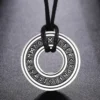A legacy carved in silver and stone
Viking jewellery has always captured the imagination. These intricate pieces were not simply adornments. Instead, they held layers of meaning, power, and belief. For the Norse, wearing a pendant or rune was not just about beauty. It was about carrying faith, protection, and connection to the gods. Today, Viking jewellery still resonates with people who seek symbolism, strength, and a touch of ancient heritage.
Jewellery as status and story
For the Vikings, jewellery revealed wealth and identity. A silver arm ring could display a warrior’s success in battle. A finely worked brooch might show the artistry of a skilled craftsman. Yet jewellery was more than a status symbol. Each object carried a story. The patterns carved into a bead or the form of an amulet linked the wearer to their ancestors and gods.
Norse mythology guided everyday life. Jewellery was a way to embody these beliefs in visible form. It offered protection during voyages, courage in battle, and blessings in daily life. This deep symbolism is what continues to fascinate historians and collectors today.

The power of runes
Runes were the letters of the Viking alphabet, but they were far more than writing tools. Each rune carried its own meaning. For instance, Fehu symbolised wealth and prosperity. Algiz stood for protection. Tiwaz represented honour and justice. Carving these symbols into jewellery transformed them into talismans.
Worn close to the body, rune-inscribed pendants gave the wearer confidence and strength. They were seen as bridges between the human and divine. When placed on rings, amulets, or even sword hilts, runes turned objects into living symbols of power.
Amulets of protection
The Vikings lived in a dangerous world. Seafaring, raiding, and harsh winters were part of life. Amulets provided comfort and spiritual protection. The most famous of these is the Mjölnir pendant, shaped like Thor’s hammer. This amulet offered divine strength and warded off evil forces.
Other amulets included miniature axes, believed to call on warrior courage, and animal figures linked to sacred beasts. For example, ravens connected wearers to Odin, the god of wisdom. Wolves symbolised ferocity and loyalty, often associated with battle. Each amulet represented both myth and personal meaning, binding the wearer to their chosen source of strength.
The role of animals in Viking symbolism
Animal imagery in Viking jewellery was not decorative alone. It reflected deep connections to myth and spirit. Serpents, for instance, carried dual meaning. They could represent both destruction and eternal cycles, recalling the world serpent Jörmungandr.
Horses stood for speed, loyalty, and journeys. Birds, especially ravens, signified divine knowledge. Through jewellery, Vikings could align themselves with the qualities of these creatures. To wear such symbols was to claim the strength or wisdom of the animal itself.

Ritual and belief in everyday life
Jewellery often played a role in ritual. Some pieces were buried with their owners, believed to accompany them to the afterlife. Others were deliberately broken as offerings to the gods. Even simple beads strung together could carry protective meanings, especially when combined with runes or sacred colours.
Everyday belief was woven into each pendant, brooch, or arm ring. Viking jewellery was not a fashion statement in the modern sense. It was a spiritual tool, carrying both visible beauty and invisible strength.
Craftsmanship and meaning combined
Viking artisans were masters of metalwork. They blended intricate knot patterns, animal motifs, and rune carvings into their designs. The resulting objects were both works of art and spiritual instruments. The skill involved meant these pieces could endure for centuries, which is why so many survive today.
The enduring appeal of Viking jewellery lies in this blend of craftsmanship and meaning. It allows us to hold history in our hands. Each design connects us to a worldview shaped by courage, myth, and nature.
Why Viking jewellery still matters today
In our modern world, people continue to wear Viking-inspired jewellery. Some are drawn to its artistry. Others connect with its symbolism of strength, protection, and wisdom. Many feel that these designs remind us of a time when belief was woven into every object.
Collectors often see these items as part of a greater journey, linking them to the past. For history lovers, they are not mere replicas. They are fragments of tradition, carrying echoes of myth and meaning. Wearing a rune pendant today can still inspire courage. Owning a Thor’s hammer amulet can still provide comfort.
Connecting the past and present
The symbolism of Viking jewellery endures because it speaks to universal human needs. We all seek protection, guidance, and connection. The Vikings expressed these desires through amulets, runes, and animal figures. Modern enthusiasts find the same reassurance in these ancient designs.
When we look at a silver rune pendant or a carved Mjölnir, we are not just seeing decoration. We are glimpsing the spiritual heartbeat of a culture that shaped northern Europe. Jewellery was their way of expressing identity, honouring the gods, and facing the unknown.
A heritage worth wearing
For lovers of history and heritage, Viking jewellery offers more than aesthetics. It offers belonging to a timeless story. Each symbol, from runes to animals, reflects a world where faith and daily life were inseparable.
Today, owning or gifting Viking-inspired jewellery is not only about style. It is about carrying forward a tradition. It is about feeling the weight of history while celebrating personal strength. That is why the symbolism of Viking jewellery still captivates, centuries after the last longship sailed.

Viking Art and Jewellery
Whether you’re seeking a token of protection, a symbol of strength, or a gift for a lover of history, our selection offers something truly special. Wear it as a connection to the past or display it as a piece of living history. Let Viking art remind you that we’re all part of an ongoing saga.
Explore our Viking Art and Jewellery and carry a fragment of Norse legend into your modern world.





